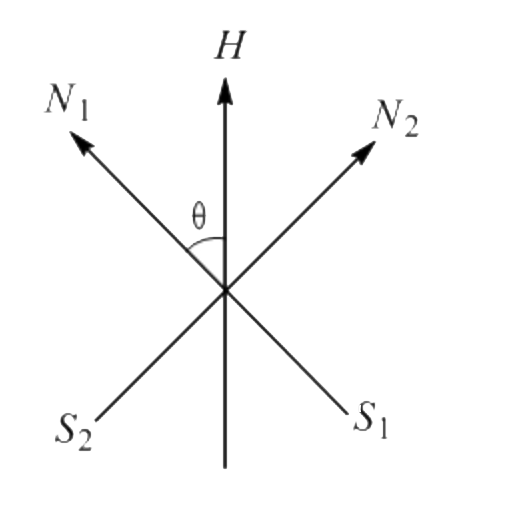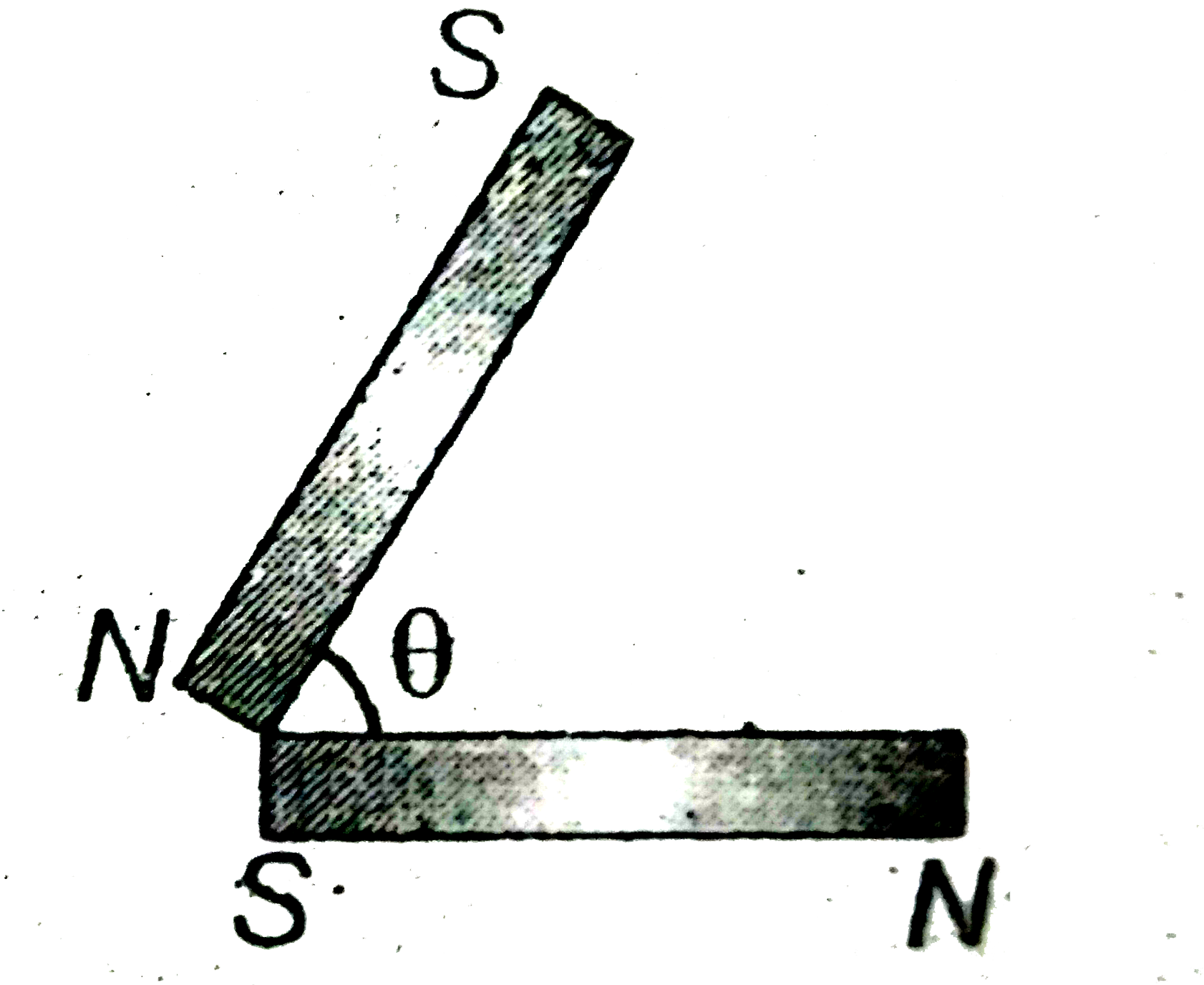Two magnet of equal mass are joined at right angles to each other as shown the magnet 1 has a magnetic moment 3 times that of magnet 2. This arrangment is pivoted so that it is free to rotate in the horizontal plane. In equilibrium what angle will the magnet 1 subtend with the magnetic meridian?

tan−1(12)
tan−1(13)
tan−1(1)
0∘
The correct Answer is:B
For equilibrium of the system torques on M1 and M2 due to BH must counter balance each other i.e., M1×BH=M2×BH. If theta is the angle between M1 and BH will be (90−θ), so M1BHsinθ=M2BHsin(90−θ)
⇒tanθ=M2M1=M3M=13⇒θ=tan−1(13)
Topper's Solved these Questions
- MAGNETISM AND MATTERBook:A2ZChapter:MAGNETISM AND MATTERExercise:Section B - Assertion Reasoning
Explore 16 Videos
- MAGNETISM AND MATTERBook:A2ZChapter:MAGNETISM AND MATTERExercise:AIPMTNEET Questions
Explore 26 Videos
- MAGNETISM AND MATTERBook:A2ZChapter:MAGNETISM AND MATTERExercise:Magnetic Materials
Explore 50 Videos
- GEOMETRICAL OPTICSBook:A2ZChapter:GEOMETRICAL OPTICSExercise:Section D - Chapter End Test
Explore 30 Videos
- MOCK TESTBook:A2ZChapter:MOCK TESTExercise:Mock Test 3
Explore 44 Videos
Similar Questions
Knowledge Check
Two magnets of equal mass are joined at 90∘ each other as shown in figure. Magnet N1S1 has a magnetic moment √3 times that of N2S2. The arrangement is pivoted so that it is free to rotate in horizontal plane. When in equilibrium, what angle should N1S1 make with magnetic meridian?
 A75∘B60∘C30∘D45∘
A75∘B60∘C30∘D45∘Two magnets, each of magnetic miment 'M' are placed so as to form a cross at right angles to each other. The magnetic moment of the system will be
A2 MB√2MCM2DMTwo magnets, each of magnetic miment 'M' are placed so as to form a cross at right angles to each other. The magnetic moment of the system will be
A2MB√2MC0.5MDM
Two magnets of magnetic moment m and 3m are mounted so as to cross each other at an angle of 60∘. The combination rests on a cork floating on water. Find the angle which the weaker magnet makes with the meridian.
View SolutionTwo magnets of magnetic moments 4Am2and3Am2 are joined to form a cross (+), then the magnetic moment of the combination is
View SolutionTwo magnets of magnetic moments 4Am2and3Am2 are joined to form a cross (+), then the magnetic moment of the combination is
View SolutionTwo identical short bar magnets, each having magnetic moment M, are placed a distance of 2d apart with axes perpendicular to each other in a horizontal plane. The magnetic induction at a point midway between them is
View SolutionThe value of workdone for rotating a magnet of magnetic moment M by an angle θ in external magnetic field H is given by
View Solution
